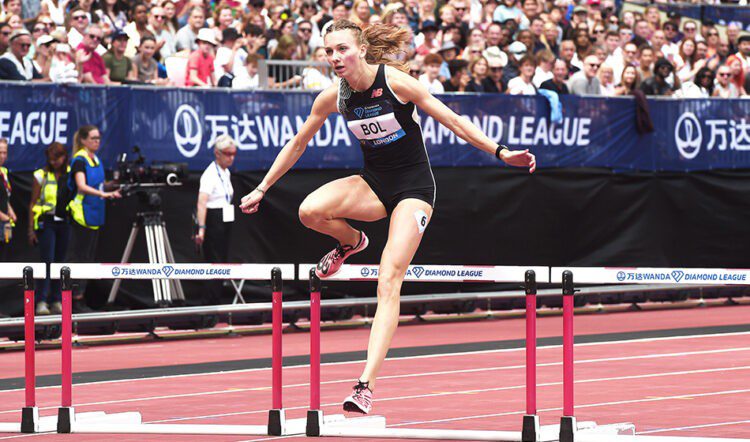
Not only did the 400m hurdler re-learn her main event to become a world champion, she also managed to bounce back from major disappointment in what was a golden summer
Femke Bol is a multi-tasker. Whether it’s breaking barriers over the flat 400m, clearing barriers over the 400m hurdles or being the star member of her nation’s 4x400m relay squad, the AW International Female Athlete of the Year has shown herself to be only too willing to carry the burden of a substantial workload. It was an approach which saw her win world medals both indoors and out last year, as well as a memorable golden European hat-trick. Yet still something didn’t feel quite right. Heading into last winter, another job was added to the 23-year-old’s to do list – to re-learn her favourite event.
“She had run her best time in Tokyo,” says Laurent Meuwly, Bol’s coach and mentor referring to the run of 52.03 which took her to Olympic 400m hurdles bronze in an epic 2021 final. “We could say: ‘Okay, maybe that track was really fast and maybe we couldn’t find the same conditions in 2022’ but last year she was better physically but couldn’t improve her time. We both realised we were at the end of this concept with the 15 steps.”
The 15 steps of which the Swiss speaks is the stride pattern Bol takes between each barrier. It was something to which she had become very much accustomed since arriving on the global scene, but the glass ceiling had been hit.
The new plan? Run differently. Take 14 strides between the first seven hurdles and then maximise Bol’s considerable finishing speed by reverting to 15 between the final three.
“Progressively we pushed her stride a bit more and changed to having a more cruising way of running the first 200m, with longer strides,” says Meuwly. “It’s about a 12cm difference in stride length.
“And then to change after seven hurdles to go to 15 – that was something completely different to what she has been used to. But, very quickly, she realised in training that this was the direction to go in.”

Femke Bol (FBK Games)
That technical work had been the main focus of sessions at the Dutch Olympic training centre in Papendal, to such an extent that the indoor season had been little more than afterthought.
Yet Bol is, first and foremost a competitor, so she decided to race early in the year. The results were spectacular. Her speed endurance was showcased beautifully in Boston at the beginning of February when she set a world indoor best of 1:05.63 for 500m, a performance which Meuwly believes hints at another potential distance for her to tackle in future.
“I think she’s also able to perform over 800m,” he says. “She showed in Boston that she has this efficiency, and she’s pretty good in all the endurance sessions because of it. I can imagine [the 800m] might also be an option.”
A week after that 500m, Bol took down the Dutch national indoor record for 200m, with a run of 22.87, but the performance which grabbed the most headlines came on February 19. The world indoor record for 400m had stood for 41 years and was the oldest in the books. Despite previous holder Jamila Kratochvilova maintaining her innocence, many viewed the Czech’s time of 49.59 from 1982 as the result of doping.
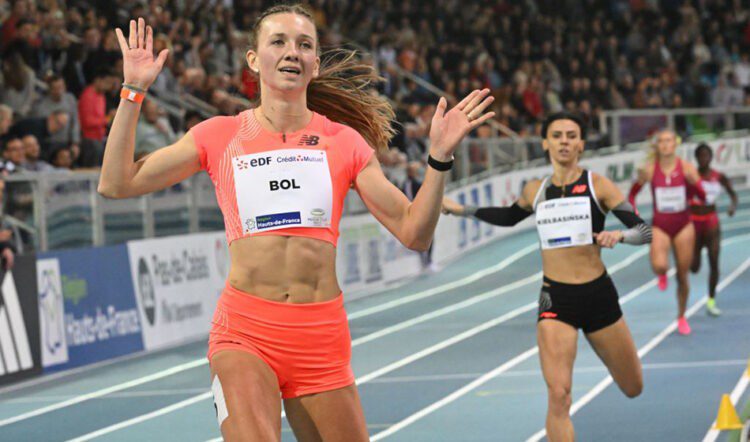
Femke Bol (Getty)
That made Bol’s clocking of 49.26 to win her national title very much a landmark moment. Not only did it underline just how well she was developing physically, it set a path to the European Indoor Championships from which she returned with 400m and 4x400m gold.
All the while, though, the hurdling revamp had been taking priority. The multi-tasking continued. There was a further element to balance, too.
Making such changes came with undoubted risk and the proof of how well they were working would become clear in public. Bol had also placed herself as one of the major players in her event – she did not want to suddenly fall down the pecking order.
“It’s important for an athlete who is at the top to remain at the top and, even when you do make those big changes, you need to adapt in a very short time to stay competitive at that level – and that is the most difficult,” admits Meuwly.
“It’s not as if she was number 15 in the world and then nobody cares if you are 24 or 20 for a moment. When you are unbeaten in the Diamond League, then when you go to the Diamond League events you will only want to win, even though you have made big changes.
“It took some time to find the right balance in her race because it’s a completely different feeling. It was not perfect from the beginning but, in London, all the pieces came together.”
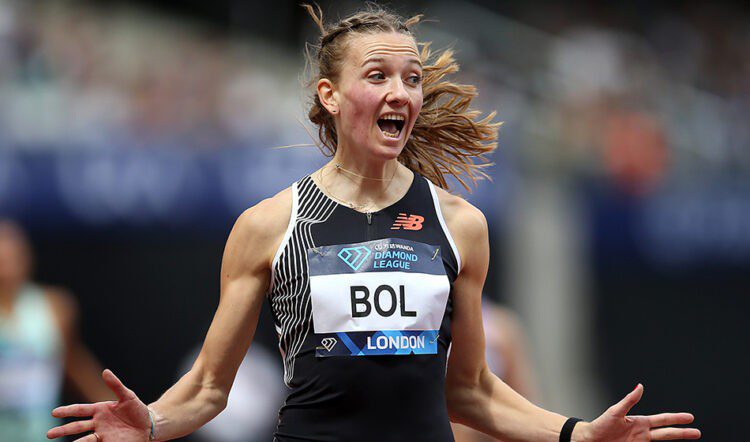
Femke Bol (Getty)
On the eve of the World Championships, at the Olympic stadium, Bol showed the extent to which her work was paying off by breaking the European record as she crossed the line in 51.45, the third-fastest time in history.
“There had been signs in training but you always need the validation of the competition to confirm that ‘now I’m better than I was before’,” says Meuwly. “[It also confirmed] 14 steps fits her qualities better. Everything was all great going to the World Championships.”
First on Bol’s Budapest itinerary was the mixed 4x400m relay. Her team weren’t just going for gold, they were also taking aim at the world record. It turned out to be an event which would represent a stern test of her resilience.
“When she got the stick at first she just wanted to go and she opened a bit too fast compared to what she’s used to,” says Meuwly of an anchor leg that ended in agony.
“Then she was surprised in the last 100m that the American was there because she was not competing against her, she was competing against the time. She lost focus and because of the fast start she also lost her form. That’s why it happened.”
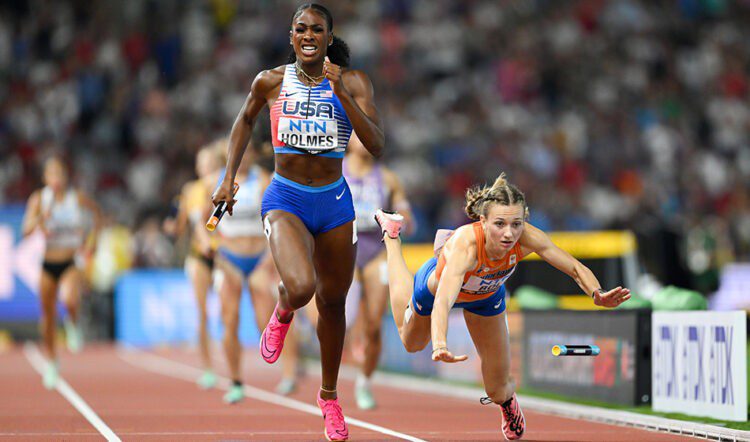
Alexis Holmes and Femke Bol (Getty)
“It” was the fall which saw Bol hit the deck. Hard. It was a blip which allowed the USA, led home by Alexis Holmes, to take the prize away. Bol was distraught and feared she had let her team-mates down. Her coach empathised but, with more events to prepare for, he was also aware that time was of the essence.
“As a coach, you know that the athletes have to go through the process of being sad, disappointed, frustrated, but you have to make sure that they go through this process in a small amount of time [during a championships] because they need to be back focusing.
“I discussed it with her and I said: ‘Be angry, be disappointed, be sad and we will speak about what happened after the championship. But by the same time tomorrow you need to be looking forward.’
“I did give her some clear technical and tactical targets for the first two rounds of the 400m hurdles so that she wouldn’t keep this situation in her head – and also to help combat the context of her being the clear favourite.
“In the heat, she had to focus on a technical point, then in the semi-final on another technical or tactical point, and then the performance was just the outcome of it. The rounds and the semi-final again gave her the confidence that she was in great shape and that she was ready to run fast. She was able to turn the situation around in the 400m hurdles.”
A command performance resulted in the first world 400m hurdles title of Bol’s career, while the turnaround was completed by a spectacular closing surge that took Netherlands’ women’s 4x400m relay team to gold in the very last track action of the championships.
“In the women’s 4x400m she showed again that she’s able to split her 400m really well and, when it goes this way, she’s almost unbeatable,” says Meuwly.

Femke Bol, Nicole Yeargin and Stacey Ann Williams (Getty)
In Bol, he now sees a more assured athlete who is more in tune with her body. With world record-holder and Olympic 400m hurdles champion Sydney McLaughlin absent for much of this season with injury but seemingly intent on switching her focus to the 400m, the Diamond League champion who was unbeaten over the 400m hurdles this year has also had to become much more accustomed to the spotlight and dealing with higher expectations.
“She has always been a very professional athlete – very well organised, very committed, very independent in the way of organising everything around training for recovery, nutrition … so this didn’t change a lot. It’s not like I had to educate her a lot in this area,” continues Meuwly.
“But of course her status has changed. With Sydney choosing to focus on 400m, Femke became the number one all of a sudden. Even the years before when Sydney was competing, she was only really competing against Femke at the championships and because Femke was racing in all the Diamond Leagues, she was always the favourite there and she had to learn to deal with this situation. The experience of racing to win, racing to beat records – I think that’s what’s changed.”
When it comes to change, there will be no big restructuring project for Bol to undertake this winter. A tweak here, an adjustment there will be about as far as it goes as the calendar turns over to Olympic year.
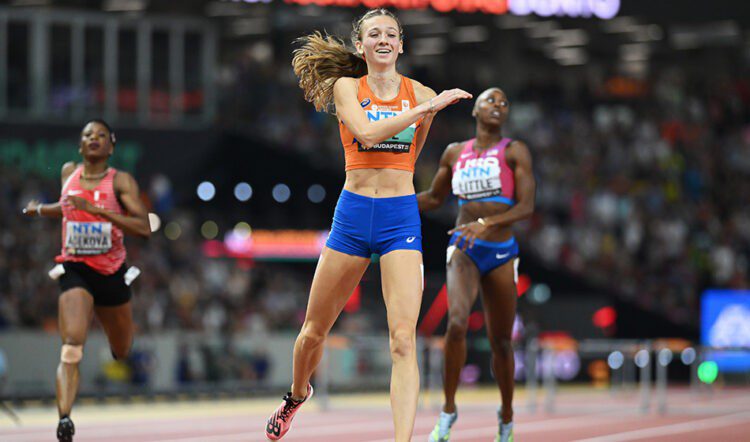
Femke Bol (Getty)
“For me, there is no difference between the World Championships and Olympic Games,” says Meuwly. “You have the same athletes on the start line and it’s just as hard to win a World Championships medal as it is an Olympic medal. So I will try not to make this year too special and not to change too many things.
“I think that’s a mistake which a lot of people make during an Olympic year. They think ‘if we do a little bit more of this or that different’ then it’s going to pay somehow, but I prefer to repeat what we saw was working very well and focus on staying healthy because I do think that consistency and being healthy is more important.
“I think if Femke stays healthy and keeps the same or even better physical condition for a second year on running the 14/15 stride pattern like last year, she can definitely run faster – probably sub 51 – and then it’s hard to say what the limit is.
“She can run faster and then try to win what she hasn’t won so far. It’s not a lot. She’s missing World Indoor gold and an Olympic gold. If she does that, then she will have won everything.”
» This article first appeared in the December issue of AW magazine, which you can read here
How Femke Bol is taking challenges in her stride appeared first on AW.

















You must be logged in to post a comment Login